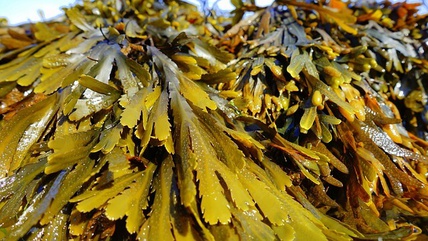Draining the body and liver in the spring is a great thing. However, if the cells are deeply clogged by chemicals (drugs, anesthetics, heavy metals from vaccines or amalgams, etc.) or endocrine disruptors (pesticides, bisphenol, etc.), plants (dandelion, boldo, artichoke, milk thistle, etc.) are not always enough.
In this case, it is necessary to move up a gear and use more powerful means of "cleaning". This time, it is through the intermediary of algae that nature will come to our service. Seaweeds are fabulous detoxification tools.
You have certainly heard of Spirulina (Spirulina platensis), a cyanobacteria or microalgae that contains a blue pigment with very interesting properties. This is the phycocyanine. This substance promotes the production of red blood cells, white blood cells and platelets. The oxygenation of the tissues and the defense of the body will be better ensured.
Phycocyanin soothes allergic inflammations and has an extremely powerful antioxidant activity
- 70 times more important than SOD,
- 16 times more important than vitamin E,
- 20 times more important than vitamin C.
By inducing biochemical changes in the formation of oxalate stones, it prevents the development of kidney stones while protecting the kidneys from mercury and drug toxicity. Spirulina's polysaccharides and phycocyanin have the ability to bind heavy metals trapped in the heart of tissues (liver, kidneys and brain). By removing these toxins, phycocyanin also exerts a hepatoprotective action.
Another algae worth mentioning is the laminaria japonica. In this case, it is the alginate and the Fucoidan (complex polysaccharide) that it contains that play an essential role in the detoxification.
Indeed, alginate is a powerful sensor of heavy metals such as mercury (dental amalgams, fish, pesticides), aluminum (vaccines and drugs such as gastric dressings), cadmium and strontium (tobacco and tobacco smoke), cobalt and radium, and other radioactive substances.
Let us recall that mercury seemed to be 5000 times more toxic for the organism than lead.
The alginate has the advantage of capturing these toxins, but also promotes their elimination outside the body, among other things through the iodine that the seaweed contains and which, among other things, activates the elimination by the kidneys.
Many are unaware thatLaminaria japonica was successfully used to treat irradiated victims during the Chernobyl disaster. Indeed, it partly protects from radioactive pollution, X-rays, microwaves, high voltage lines, televisions, computers, cell phones and the radiation from their relay antennas. These different sources of harmful radiation generate free radicals in humans, which are responsible for cell aging, birth defects and cancer. All these damages can be largely mitigated by laminaria japonica.
But that's not all...
Administration of Fucoidan contained in this algae has been shown to result in the death of all cultured cancer cells within 72 h. The observed process is a kind of self-destruction of the DNA of the cancer cells which is destroyed by digestive enzymes contained in the cells themselves. This self-destruction is called apoptosis.
This is probably part of the reason why people in the Okinawa province of Japan who consume an average of 1 gram of kombu per day (another seaweed rich in Fucoidan) have much lower cancer rates than elsewhere.
Consuming seaweed is actually an excellent thing, because many of us are deficient in iodine and have a weak thyroid. The highly assimilable iodine in seaweed helps regulate thyroid metabolism and prevent its imbalance.
Many will be pleased to note that the consumption of seaweed also helps to regulate body weight and regain energy.
